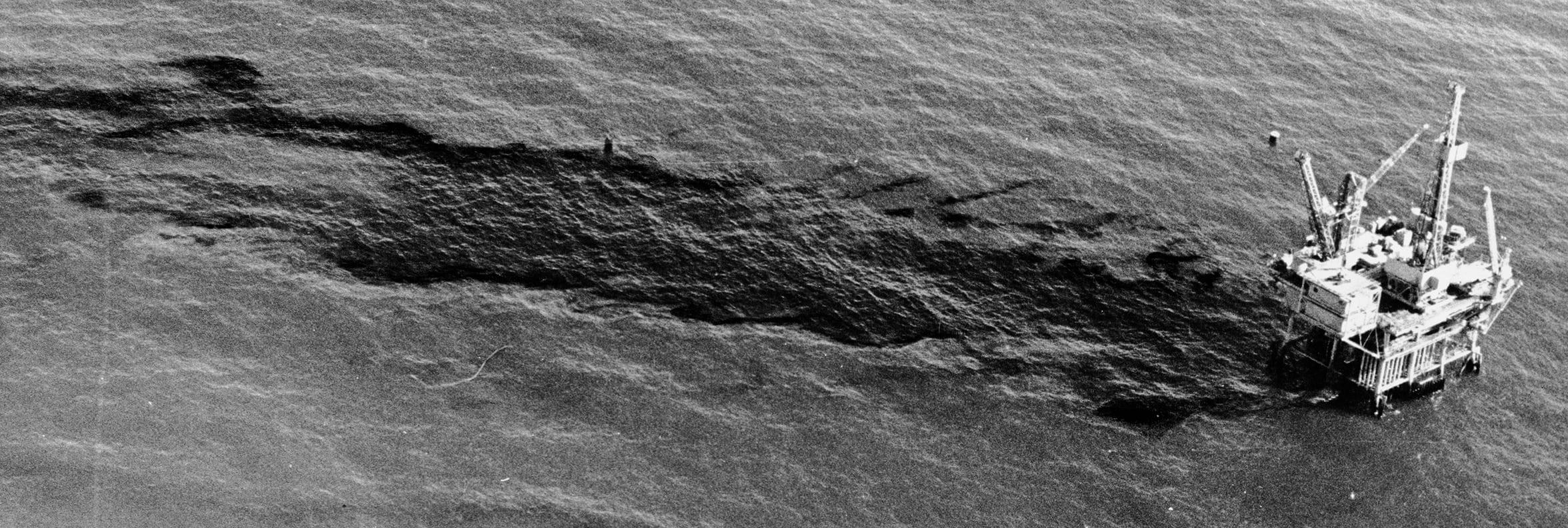On January 28, 1969, catastrophe struck. When an offshore oil platform off the California coast experienced a blow-out, over 3 million gallons of crude oil gushed into the Pacific Ocean. But while a black tide smothered the coastline, a green tide rose in the small California seaside town of Santa Barbara and quickly spread across the globe. In 1970, the first Earth Day was celebrated. Today it is the largest secular observance in the world, engaging over 1 billion people in 192 countries.
Fifty years later, the penchant for sparking global action remains strong in Santa Barbara. The Benioff Ocean Initiative, based at the University of California Santa Barbara, channels that spirit of global action to tackle the most pressing issues facing our ocean. Only now the focus has shifted to a new environmental problem: plastics.

Plastics are remarkable materials. They are strong, durable, flexible, and easy to produce. From their use in cars and electronics to food packaging and healthcare, plastics are ubiquitous in modern life. Since 1950, over 7.8 billion tons of new plastics have been produced – the equivalent of 1 ton for every person currently living on Earth.
Of those 7.8 billion tons, only 9% have ever been recycled.
Some have been incinerated (12%), but the vast majority remain overflowing in landfills and accumulating in the environment. And once they are in the environment, the ultimate fate of many plastics is the ocean. Every year, up to 12 million tons of plastics enter the ocean. It is predicted that by 2050 there will be more plastics in the ocean by weight than fish.
While some plastics — like fishing gear — enter the ocean directly, most are transported from land, much of which is via rivers. Up to 275 tons of plastics enter the ocean from rivers every hour.
Because of this, rivers offer a unique opportunity to fight the plastics crisis. In the ocean, plastics are carried to hard-to-reach places like the open ocean, down the water column, and to the sea floor. Rivers, on the other hand, are accessible, relatively shallow, and act as point sources of plastics. To turn off the tap of plastics entering the ocean, rivers are a great place to start.

With this knowledge, the Benioff Ocean Initiative and The Coca-Cola Foundation have partnered to create and support a global network of innovative, mission-driven problem solvers: the Clean Currents Coalition.

Consisting of 9 teams in 9 different countries, the Clean Currents Coalition is combating the flow of plastic waste from rivers to the ocean. The interdisciplinary teams of the Clean Currents Coalition are developing new and innovative technologies to capture plastic waste in highly-polluted rivers and to repurpose and recycle the collected materials.
But the intervention doesn’t stop there. While there are many noble plastics clean up efforts underway around the world, the Clean Currents Coalition is taking it one step further. Through extensive data collection and pioneering the use of new technologies like artificial intelligence, we are compiling a standardized, global dataset of plastic waste in the environment to better inform scientific research and management strategies. The teams are also working closely with their local communities to create real change surrounding policy, infrastructure, and behavior related to plastic waste. Our goal is that one day, thanks to the Clean Currents Coalition, there will no longer be plastic waste in our rivers to remove.

Today, each Clean Currents Coalition team is working in one community on one river system. But together, through collaboration, knowledge-sharing, and a common goal, our ambition is to use what we learn and help replicate these successes to more and more river communities around the world. We are taking the lead on global action to fight a global problem.
Join us on the journey of the Clean Currents Coalition. Follow us on this blog as we share the unique stories of these rivers and their communities as they work towards cleaner currents.
- Benioff Ocean Initiative. (2019, May). River Plastic Pollution. Retrieved May 2020, from
https://boi.ucsb.edu/active_projects/river-plastics-pollutio - Earthday.org. (2020). The History of Earth Day. Retrieved May 2020, from
https://code.earthday.org/history/ - Schmidt et al (2017). Export of plastic debris by rivers into the sea. Environmental Science & Technology, 51(21), 12246–12253
https://doi.org/10.1021/acs.est.7b02368 - Wheeling, Kate & Ufberg, Max. (2018, November 7). ‘The Ocean is Boiling’: The Complete Oral History of the 1969 Santa Barbara Oil Spill. Pacific Standard. Retrieved May 2020, from
https://psmag.com/news/the-ocean-is-boiling-the-complete-oral-history-of-the-1969-santa-barbara-oil-spill - World Economic Forum, Ellen MacArthur Foundation, and McKinsey & Company. (2016, January 19). The New Plastics Economy. Retrieved May 2020, from
https://code.ellenmacarthurfoundation.org/publications/the-new-plastics-economy-rethinking-the-future-of-plastics

